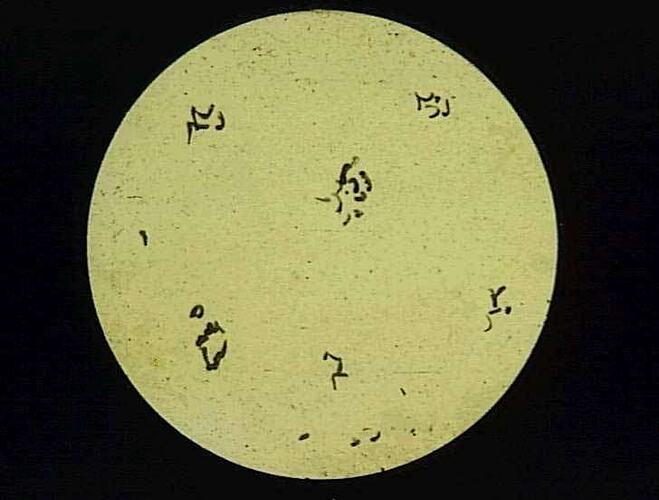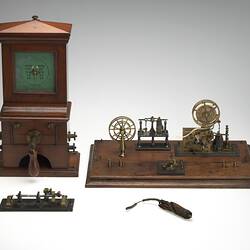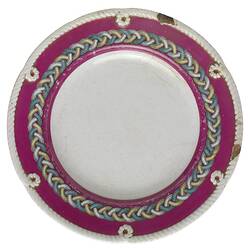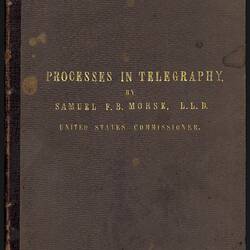On the morning of 1 September 1859, Richard Carrington, an expert solar astronomer, was observing the sun from his private observatory near Redhill in Surrey in England. He was sketching a large group of sunspots when suddenly, at 11.18 am, two extremely bright beads of white light appeared over the sunspots.
Realising that he was seeing something very unusual, Carrington rushed off to find a witness. When he returned to his telescope, as he later wrote, 'within 60 seconds, I was mortified to find that it was already much changed and enfeebled.' Five minutes later the white beads had gone. What Carrington had seen became known as the "Carrington event". It was the visible evidence of the eruption of a massive solar flare on the sun's surface.
This flare launched a massive magnetic disturbance and a large cloud of charged particles (a coronal mass ejection or CME) towards the earth. The arrival of the CME resulted in brilliant auroral displays around both north and south poles and even at lower latitudes near the tropics. The magnetic "storm" caused by the CME also caused massive disturbance to electric telegraph systems all over the world. Operators received electric shocks from their equipment and spark discharges set fire to paper in telegraph receivers.
In the United States, the Philadelphia Evening Bulletin reported that 'there were numerous side displays in the telegraph offices where fantastical and unreadable messages came through the instruments, and where the atmospheric fireworks assumed shape and substance in brilliant sparks.'
In Victoria, the effects of the solar disturbances on the telegraph system were also apparent. Samuel McGowan, the General Superintendent of Electric Telegraph, included an account of interruptions to telegraphic communication in his report to the Victorian Parliament in December 1859 . He stated: 'Not the least interesting cause of the several interruptions was the Aurora Australis, as noted on 29th August and 2nd September last.The effect upon the wires was in many cases singular. At times prevailing atmospheric currents would entirely dissipate the artificial current and assume complete possession of the lines, baffling all attempts at rendering the communication available. Again the atmospheric currents would suddenly, entirely disappear; the lines would work perfectly, when in a moment the electromagnets would be quite deprived of their ordinary power , the conducting medium would be polarized in several opposite directions, within as many seconds, and the whole natural condition of the instruments would be instantly reversed, and as suddenly set right. On one occasion during this interesting disturbance of the natural elements, I communicated with, and received an acknowledgement from, a station distant 32 miles, through atmospheric currents alone, there being at the time no battery on the line. I may add that I witnessed similar effects about twelve years back, on a line of electric telegraph in Upper Canada during the presence of a magnificent Aurora Borealis in mid-winter.'
Bibliography:
Carrington, R. C. (1860) Description of a singular appearance seen in the Sun on September 1, 1859. Monthly Notices of the Royal Astronomical Society, 20:13
Clark, Stuart (2007) The Sun Kings: The Unexpected Tragedy of Richard Carrington and the Tale of how Modern Astronomy Began, Princeton University Press, Princeton.
McGowan, S. W. (1860) Half-yearly report of the General Superintendent of Electric Telegraph relative to the advancement and present condition of the Department, up to 31st december, 1859, Parliament of Victoria, Melbourne.
Brooks, Michael (2009) Space storm alert: 90 seconds from catastrophe, New Scientist, 18 March 2009.
National Research Council of the National Academies - Space Studies Board (2008) Severe Space Weather Events - Understanding Societal and Economic Impacts: A Workshop Report, National Academies Press, Washington, D.C. (Available at http://www.nap.edu/catalog.php?record_id=12507#toc (accessed 17 July 2009)
More Information
-
Keywords
-
Authors
-
Article types



